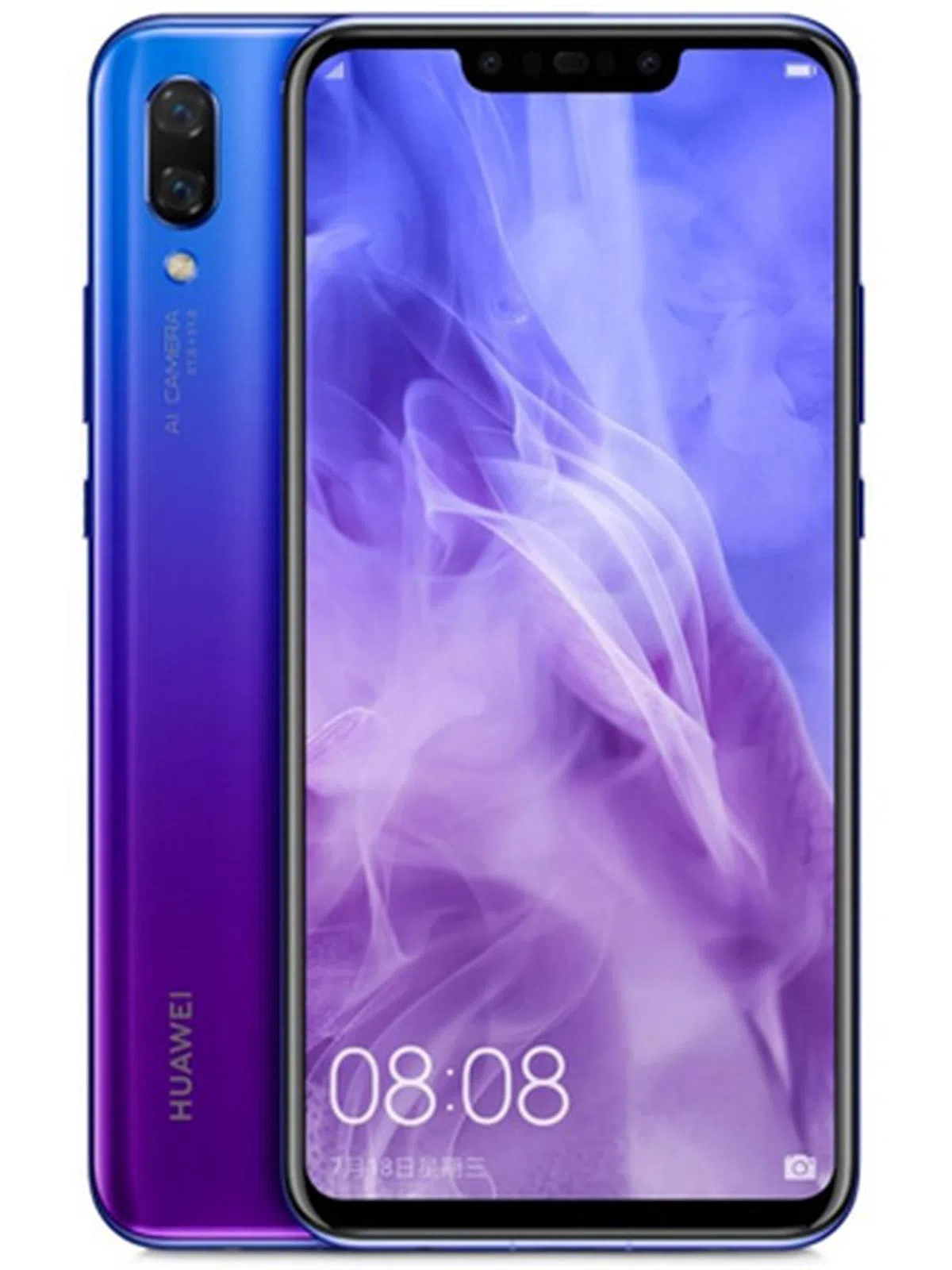ASUS ZenFone Max Pro M1 vs. Huawei Nova 3i: Battle of the budget contenders
The entry-level smartphone market has been dominated for the past few years by Xiaomi. But now both ASUS and Huawei are looking to change that with the introduction of a pair of sub-S$400 phones, each with their own unique selling points.
Note: This article was first published on 28th September 2018.
Overview
The entry-level smartphone market has been dominated for the past few years by Xiaomi. But now both ASUS and Huawei are looking to change that with the introduction of a pair of sub-S$400 phones, each with their own unique selling points.
For ASUS, it's a massive 5,000mAh battery in its S$348 ZenFone Max Pro M1 (no relation to the Singapore telco by the way) that looks to be the difference maker. While for Huawei, its S$398 Nova 3i has the distinction of offering the world's first 24-megapixel quad camera setup (two on the back, two on the front). But which budget phone is better, and how do they compare to similar budget models like Xiaomi's Mi A2 or Redmi 5 Plus? Let's find out.
Design: ASUS ZenFone Max Pro M1

Despite its bombastic name, the ZenFone Max Pro M1 is actually quite understated with a fairly generic design that looks a little bit like a Space Gray iPhone 6. The phone has a plastic frame with a fairly convincing metallic finish, and a metal alloy insert on the rear. The back of the phone has a circular fingerprint scanner and a vertical dual camera setup in the top left corner.

Both the power button and volume rocker can be found on the right-side. The power button has ASUS's signature concentric circle design on it, but this is the only design flourish you'll find on the phone.

On the left side you can pull out a comically long SIM tray that houses two Nano-SIM card slots as well as a dedicated microSD card slot, so unlike a lot of dual-SIM phones, you don't have to choose between expandable storage or a second SIM. Having said that, it's worth noting that the phone has just 32GB internal storage, which is hardly anything, so you'll almost definitely have to use that microSD card slot. Both SIM slots support up to 4G LTE Cat4 (up to 150Mbps) speeds.

On the bottom there's a single speaker, a micro-USB port, and a 3.5mm headphone jack.

At 8.5mm, the phone is a little on the thick side, and it feels quite dense too (possibly owing to its 5,000mAh battery) with a weight of 180g. The overall design also looks a little dated and follows the 2017 style before notches became fashionable, with an 18:9 aspect ratio display and fairly chunky top and bottom bezels. Having said that, if you hate notches, this might not be a bad thing.
Design: Huawei Nova 3i

The Huawei Nova 3i is basically a toned down version of the Huawei Nova 3, and confusingly, is also known in some markets as the P Smart+. Design-wise, the Nova 3i is basically the complete opposite of the understated Max Pro M1 and has a flashy metal and glass design available in an array of bright and iridescent colors.
My Iris Purple model has an almost holographic finish to it and, while it's a little loud for my personal tastes, it's definitely eye-catching. The aluminum frame and even the bezel around the camera module are color-matched to the rear, and the phone certainly looks and feels a lot more premium than its S$398 price tag.

The back of the phone looks a lot like Huawei's P20, which includes the landscape orientation on all branding and wordmarks. The dual camera setup can be found in the top left corner (or right if you're holding the phone in landscape orientation) and, like the Max Pro M1, there's a circular fingerprint scanner in the middle.
Just like the Max Pro M1, both the power button and volume rocker can be found on the right side, while the dual Nano-SIM card tray is on the left side, with the second SIM doubling up as a microSD card slot that is compatible with cards up to 256GB in capacity. Having said that, the phone has a very generous 128GB internal storage, so you probably won't need an SD card.

On the bottom, there's a single speaker grille, a micro-USB port, and a 3.5mm headphone jack.

Despite having a larger screen than the Max Pro M1, the Nova 3i is actually slightly shorter overall, thanks to a 19.5:9 aspect ratio display with a notch that houses the earpiece and dual front camera setup. The bottom bezel is also quite small, which is impressive for this price point.

The Nova 3i is also nearly 1mm thinner than the ZenFone, and weighs 11g less, which contributes to its more premium feel.

Displays and Audio
The Max Pro M1 has a 5.99-inch 18:9 aspect ratio 2,160 x 1,080 pixels resolution (~404ppi) IPS LCD display. The display has good color reproduction, but it's a little dim, which makes it a bit hard to see the display under bright light. The viewing angles also aren't great, and the contrast could be better too.

The Huawei Nova 3i has a 6.3-inch 19.5:9 aspect ratio 2,340 x 1,080 pixels resolution (~409ppi) IPS LCD display. It's brighter than the Max Pro M1 at maximum brightness, with better viewing angles, and slightly more vivid colors. However, like the Max Pro M1, contrast could be a little better.

Despite having a 0.3-inch bigger display on paper, the Nova 3i doesn't actually look that much bigger than the Max Pro M1. Additionally, the notch at the top of the display obscures content, which means you can't use the full screen when watching videos, so they end up appearing about the same size on both phones.
Audio on both phones comes from a single downward firing speaker. Neither phone excels here and both speakers aren't the best. The Nova 3i is slightly louder, but also sounds a bit distorted at maximum volume levels. On the plus side, both phones have 3.5mm headphone jacks, so wired audio is always an option.
Software: ASUS ZenFone Max Pro M1
ASUS normally installs its ZenUI skin on its phones, but surprisingly, the Max Pro M1 runs on stock Android 8.1 Oreo.


The phone isn't part of Google's Android One initiative, so you won't get OS updates as fast as Android One phones like the Xiaomi Mi A2 but ASUS is normally pretty good with rolling out updates in a timely manner.
ASUS includes a few of its own apps, including Sound Recorder, FM Radio, its own Calculator app, and an ASUS Service Center app and, while you can't delete them, they're fairly non-intrusive.

Like most phones today, the Max Pro M1 supports facial recognition unlock using the phone's 16-megapixel front camera. However, the unlocking process is quite slow and sometimes refuses to work, even in good lighting, so you're generally better off sticking to the fingerprint scanner, which is both fast and accurate.

Software: Huawei Nova 3i
The Nova 3i also runs on Android 8.1 Oreo, but it looks very different thanks to Huawei's EMUI 8.2.0 skin running on top of it.


Like most China-brand UIs, there's no app drawer, with all apps sitting on the home screen similar to iOS. Fortunately, it's easy to enough to restore the app drawer by going to the Home Screen Style settings menu and choosing the 'Drawer' style.

You can also find an option in the Settings menu for hiding or displaying the notch.

Despite being a budget phone, EMUI on the Nova 3i includes most of the software features you'll find on Huawei's more high-end phones. That includes useful features like app cloning, smart split screen, and pick up to wake the phone.
EMUI does come with quite a lot of bloatware, however. There are pre-installed versions of Facebook, Messenger, Netflix, and Booking.com, two different third-party camera apps, and no less than seven pre-installed games. Fortunately, all of these can be uninstalled. However, Huawei also includes its own suite of apps including its own versions of Video, Music, Health, Calendar, and a dozen or so Tools, which double as inferior duplicates of Google apps, and these can't be uninstalled.
Huawei also has its own version of facial recognition unlocking, and it's actually surprisingly good. Huawei's version uses the front-facing 24-megapixel camera and is much faster and more reliable than ASUS' version. It works pretty well in low-light environments too.

Finally, it's worth noting that neither phone supports NFC, which rules out most cashless payment apps.
Benchmark Performance
The ASUS ZenFone Max Pro M1 is powered by a Qualcomm Snapdragon 636 processor. The 636 is an octa-core processor built on a 14nm manufacturing process. There are actually multiple variants of the Max Pro M1 available, one with 3GB RAM, one with 4GB, and one with a whopping 6GB RAM. Unfortunately, the version available in Singapore, and the one we have for review, is the lowest-end 3GB model.
The Huawei Nova 3i is powered by Huawei's new Kirin 710 processor. This octa-core SoC is built on a 12nm manufacturing process and comprises of 4x Cortex A73 at 2.2GHz and 4x Cortex A53 at 1.7GHz.
SunSpider Javascript
SunSpider JavaScript measures the browsing performance of a device when processing JavaScript. It not only takes into consideration the underlying hardware performance, but also assesses how optimized a particular platform is in delivering a high-speed web browsing experience.
Both phones were a little disappointing on this benchmark, scoring slower than both the Qualcomm Snapdragon 660-powered Mi A2, and the 625-powered Redmi 5 Plus. Actual browser experience on both phones was fairly good, although I did notice some occasional lagginess on the Nova 3i.

Basemark OS II
Basemark OS II is an all-in-one benchmarking tool that measures overall performance through a comprehensive suite of tests including system, internal and external memory, graphics, web browsing, and CPU consumption.
Surprisingly the Kirin 710 and Snapdragon 636 were very close on this benchmark, although both were quite a bit behind the Snapdragon 660.

3DMark Sling Shot
3DMark Sling Shot is an advanced 3D graphics benchmark that tests the full range of OpenGL ES 3.1 and ES 3.0 API features including multiple render targets, instanced rendering, uniform buffers and transform feedback. The test also includes impressive volumetric lighting and post-processing effects. We're running this benchmark in Unlimited mode, which ignores screen resolutions.
We saw similar results in this benchmark with the Max Pro M1 and Nova 3i again scoring very similarly. Once again however, the Mi A2 was way ahead.
Imaging - ASUS ZenFone Max Pro M1

The Max Pro M1 uses a dual rear camera setup comprising of a 13-megapixel, f/2.2 wide-angle lens paired with a 5-megapixel f/2.4 lens. As with many entry and mid-range phones, the secondary lens doesn't really do anything, and is only there to collect depth information for Portrait mode. The rear camera uses an Omnivision 16880 imaging sensor.
Overall image quality isn't too bad, although there is some noticeable processing if you zoom in closer. The camera also really struggles to auto-focus in low-light environments.



Huawei Nova 3i

The Nova 3i uses a similar dual-camera setup pairing a main 16-megapixel, f/2.2 lens with a 2-megapixel lens that only collects depth information. Surprisingly, the front camera is actually superior, using a 24-megapixel f/2 lens paired with the same 2-megapixel depth sensor lens.
Like Huawei's flagship phones, the Nova 3i's camera is AI-assisted, and includes image recognition that will enhance your pictures. For example, if it detects you're looking at food, it will make colors more vivid to make the food look more enticing, or if it detects a face it will automatically activate Portrait settings. It can even distinguish between single portraits and group portraits.


The Nova 3i also includes a multitude of shooting modes, including light painting, long exposure, time-lapse, pro mode, night mode, slow-motion, HDR, and Artist mode (which applies really trippy filters in real time).
Image quality is quite good, with good color reproduction and reasonably sharp details throughout. Although, like the Max Pro M1, if you zoom in, there is noticeable processing. Auto-focus on the Nova 3i, however, is fairly fast, even in low light.



Battery Life
Our standard battery test for mobile phones has the following parameters:
- Looping a 720p video with screen brightness and volume at 100%
- Wi-Fi and Bluetooth connectivity turned on
- Constant data streaming through email and Twitter
The Max Pro M1 has a massive 5,000mAh battery, while the Huawei Nova 3i has a more conservative 3,340mAh unit. The M1 showed off what it can do with that extra battery capacity, however, as it lasted 11 hours and 38 minutes in our video looping benchmark test. The Nova 3i lasted 8 hours and 32 minutes.

Neither phone is equipped with either wireless charging or fast charging, so it takes a while to charge them. Even if you connect a fast charging power adaptor, you'll only get a maximum power transfer of 10W on either phone. The Nova 3i took just under two hours to charge from empty to full, while the Max Pro M1 took a whopping three hours to fully charge.
Conclusion

When shopping for an entry-level phone, you're really looking for the best value for money. Both of these phones offer good value, but it's the Huawei Nova 3i that really stands out. While it's a bit more expensive than the Max Pro M1, it looks a lot more high-end with its 19.5:9 aspect ratio display, thin bezels, and eye-catching metal and glass design. The Nova 3i doesn't look that different from Huawei's $1,000 flagship phones, whereas the mostly plastic build of the Max Pro M1 just screams "entry-level."
Both phones have reasonably capable cameras, but the Nova 3i also includes a number of useful AI features and an extensive range of shooting modes.
The one area where the Max Pro M1 wins is battery life, where it lasted over three hours longer in our video looping benchmark. That's long enough to watch an entire movie! Considering the Max Pro M1's key feature is battery life though, it would have been really nice to see fast charging enabled on it.
Compared to Xiaomi's Mi A2, both the Max Pro M1 and Nova 3i beat it in terms of battery life, and both also include expandable storage and a headphone jack, which the Mi A2 lacks. The Mi A2 has a slightly better processor, but it isn't that much better. Its aluminum unibody design also looks a little dated, especially when compared to the more modern metal and glass design of the Nova 3i.
Overall, if battery life is your main concern the Max Pro M1 is worth a closer look, but if you're looking for the best value for money, and you want a phone that doesn't look or feel anything like a budget phone, the Huawei Nova 3i is your best choice.



